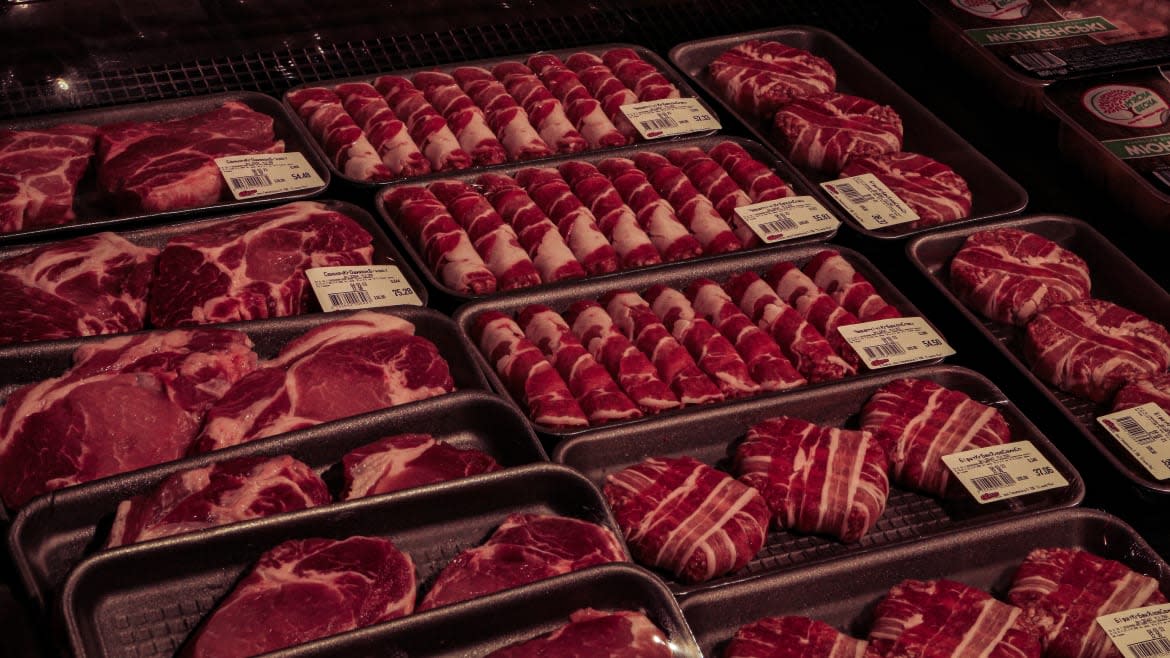40 Percent of Supermarket Meat May Have ‘Superbugs’

While the TV show Beef might be trending on Netflix, new research might have you avoiding the genuine article at your grocery store.
Spanish researchers found the presence of multidrug-resistant E. coli in 40 percent of supermarket meat samples they tested. While the majority of the meat tested had levels of E. coli that were within food safety guidelines, nearly half had drug-resistant strains of the bacteria that were also potentially pathogenic.
The study’s authors add that this underscores the importance of surveilling meat products for pathogens, as well as vaccinating livestock against diseases. The team will be presenting their findings at the European Congress of Clinical Microbiology & Infectious Diseases conference in Copenhagen.
The MRSA Superbug’s Origin Story Began in Hedgehogs
Antibiotic resistant bacteria—or “superbugs”—are one of the biggest dangers facing public health today. In the U.S. alone, nearly 3 million Americans contract a drug-resistant infection annually—with 35,000 dying as a result, according to the CDC.
Bacteria like E. coli and C. diff are especially common since they can so easily develop and spread through unsafe meat production, handling, and cooking processes. When you eat foods contaminated with these bacteria, they infect your gastrointestinal tract leading to horrible cramps, diarrhea, and fever.
That’s why the study authors took a look at the presence of drug-resistant bacteria in supermarket meat—specifically E. Coli. To reach their findings, the researchers analyzed 100 meat products chosen from supermarkets in Oviedo, Spain in 2020. This included 25 each of beef, chicken, pork, and turkey.
They discovered that 73 percent of the meat had safe levels of E. coli. However, 49 percent contained multidrug-resistant E. coli and/or potentially pathogenic versions of the bacteria. Moreover, 40 percent of the meat contained multidrug-resistant E. coli.
Our Gut Bacteria May Have the Answers to This Mystery Illness Affecting Millions
Of the meat sample, turkey typically tested positive the most for the bacteria, followed by chicken, beef, and pork. The authors note that this is likely due to the way that poultry is processed differently from red meat. The authors note that it’s more important than ever to ensure safe meat handling practices during production and slaughter.
“Strategies at farm level, such as vaccines, to reduce the presence of specific multidrug-resistant and pathogenic bacteria in food-producing animals, which would reduce the meat carriage and consumer risk,” Azucena Mora Gutiérrez, a microbiologist at the University of Santiago de Compostela-Lugo in Spain and co-author of the study, said in a statement.
Gutiérrez added that consumers also play “a key role in food safety through proper food handling.” This means ensuring that the meat is properly refrigerated as soon as it’s brought home from the grocery store, cooking it to safe temperatures, and disinfecting tools like knives and chopping boards during the preparation process.
“With these measures, eating meat becomes a pleasure and zero risk,” Gutiérrez said.
Got a tip? Send it to The Daily Beast here
Get the Daily Beast's biggest scoops and scandals delivered right to your inbox. Sign up now.
Stay informed and gain unlimited access to the Daily Beast's unmatched reporting. Subscribe now.

 Yahoo News
Yahoo News 
